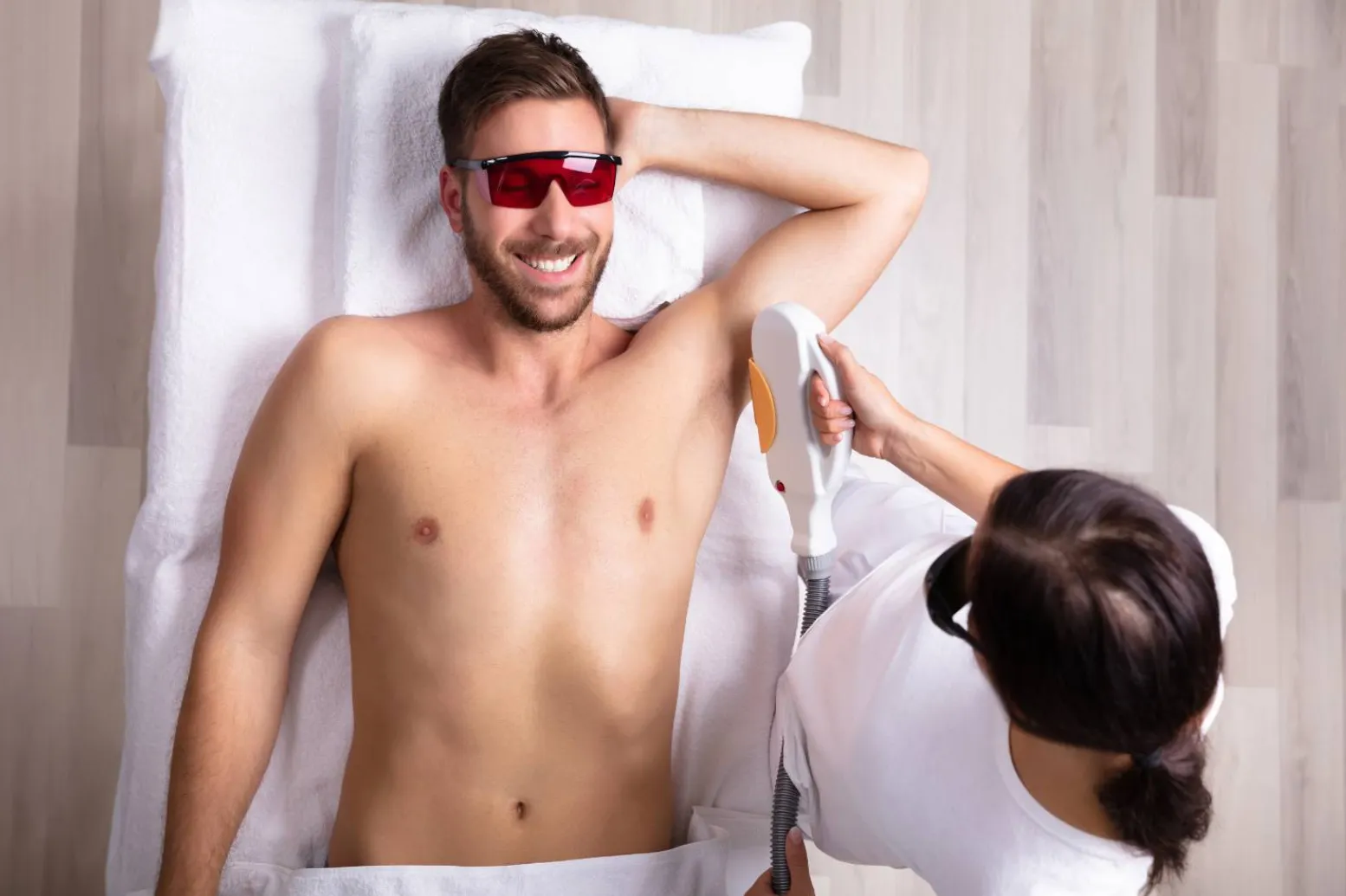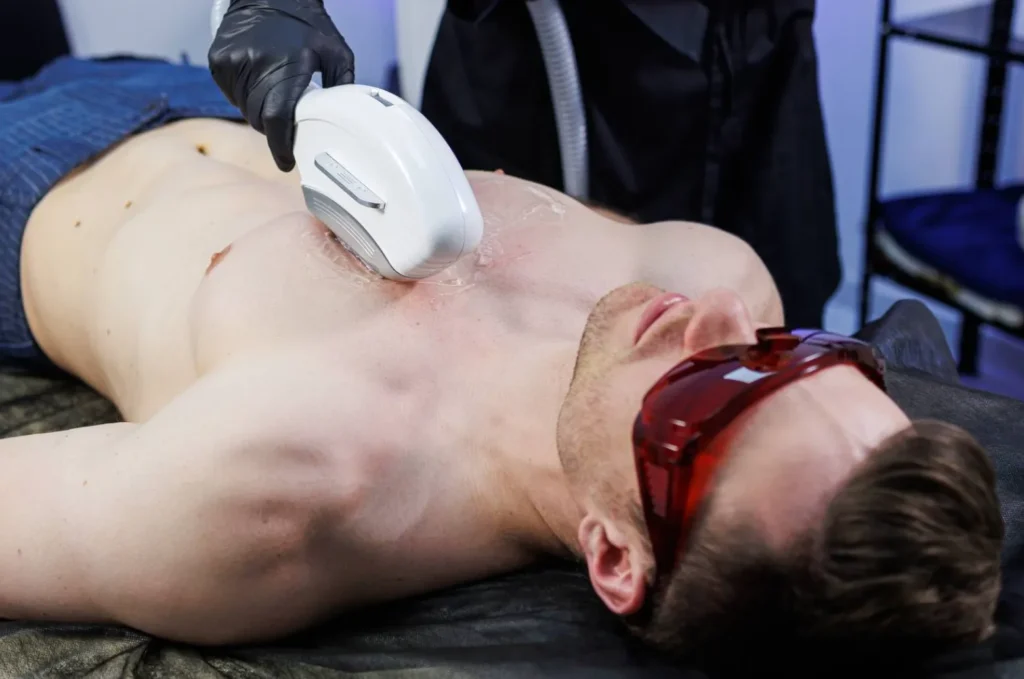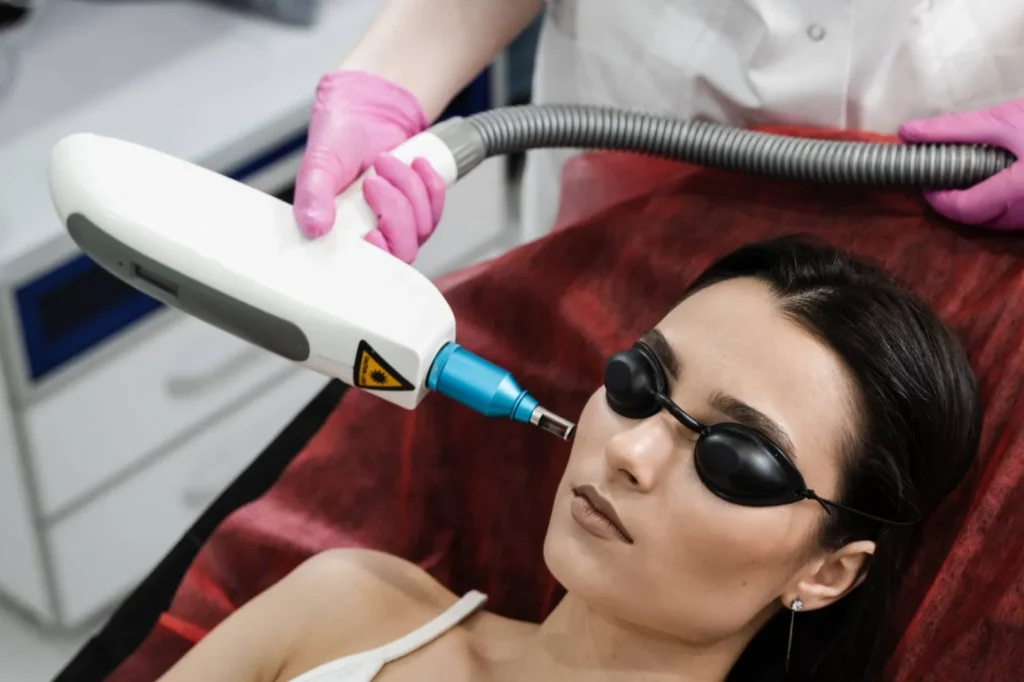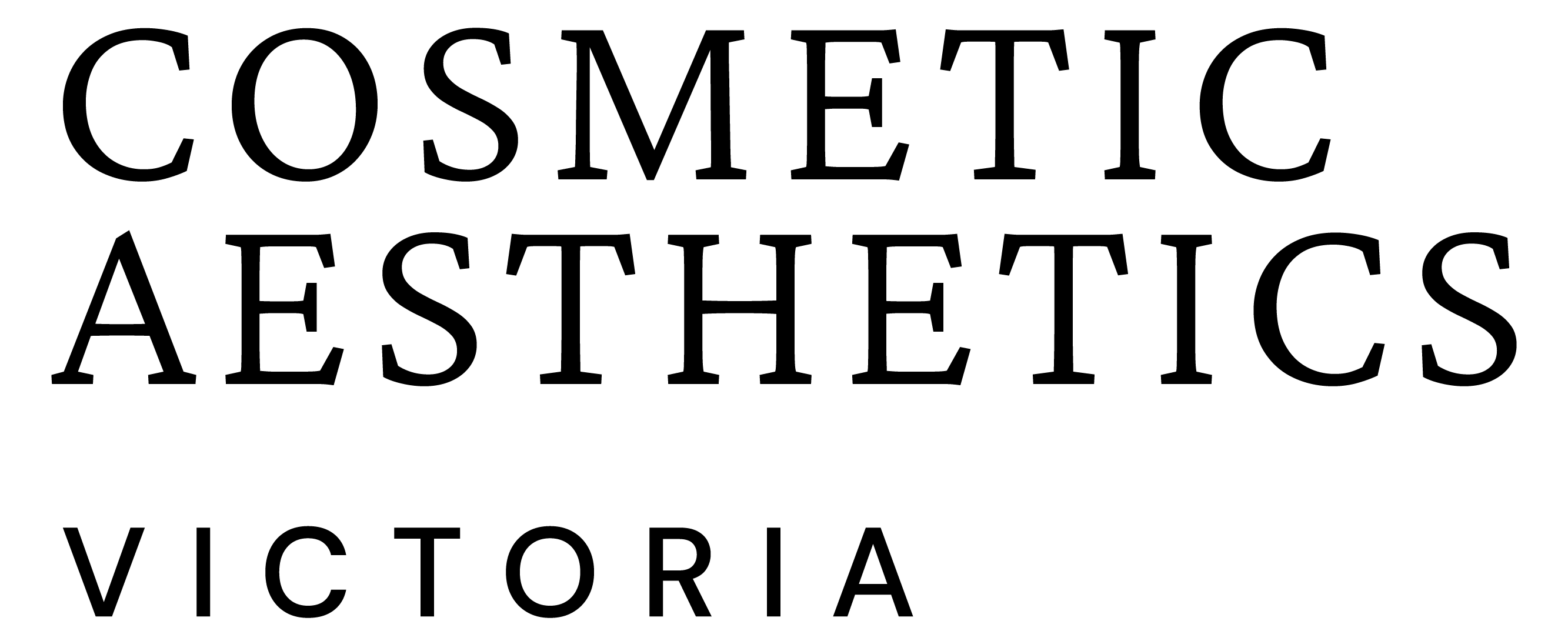
Can Laser Hair Removal Help With Ingrown Hairs?
Ingrown hairs can be more than just a nuisance—they can be a real pain, both physically and emotionally. Whether you’ve experienced the frustrating red bumps after shaving or the stubborn irritation from waxing, dealing with ingrown hairs is something many of us are familiar with. But what if I told you there’s a long-term solution that not only prevents these pesky bumps but also smooths out your skin? That’s where laser hair removal comes in.
In my years of practice, I’ve seen how it transforms lives, providing lasting relief from ingrown hairs and helping people feel confident in their skin again. Let’s discuss how laser hair removal can be your answer to ingrown hairs once and for all.
Ingrown Hairs And Their Causes
As a cosmetic practitioner, I’ve seen countless clients come in seeking solutions for ingrown hairs. It’s one of those problems that, while often brushed off as just a minor irritation, can really affect a person’s confidence and skin health. Most people think of ingrown hairs as something that simply happens after shaving, but there’s more to it than that.
Ingrown hairs occur when a hair grows back into the skin instead of breaking through the surface. These are commonly known as “razor bumps,” and let me tell you, they’re not just a cosmetic issue. Over time, they can lead to painful swelling, scarring, and in some cases, infection.
The symptoms are often easy to spot: red, painful bumps that can feel itchy, pustules that may indicate an infection, and visible trapped hairs underneath the skin. Over time, the skin may darken or scar, which can be even harder to deal with than the bumps themselves.
Now, you might be thinking, “Okay, but why do they happen?” Well, several factors are at play here. The method of hair removal you use, your hair type, and even your skin’s condition can all contribute to this issue. Let’s look at each one closely.
How Shaving, Waxing, And Tweezing Trigger Ingrown Hairs?
Hair removal methods like shaving, waxing, and tweezing can all contribute to ingrown hairs. Shaving cuts hair at an angle, making it easier for regrowth to curl back into the skin, especially for those with coarse or curly hair. Waxing and tweezing pull hairs from the root, which can also cause them to grow inward.
Curly hair, in particular, is more prone to this issue due to its natural growth pattern and curved follicles. I’ve seen many clients, especially those of African descent, struggle with ongoing ingrown hairs that lead to irritation, scarring, and even conditions like pseudofolliculitis barbae (PFB). For some, switching to laser hair removal has provided lasting relief.
How Laser Hair Removal Can Be The Ultimate Solution For Ingrown Hairs?
Now, let’s talk about one of the most effective treatments I’ve seen for ingrown hairs—laser hair removal. This treatment isn’t just about eliminating hair; it’s about addressing the root cause of ingrown hairs, and that’s why it works so well for so many people.
I’ve had the privilege of seeing firsthand how laser hair removal can transform the skin of people struggling with this issue. Take Tom, for example—a client of mine who had been shaving for years and had developed severe ingrown hairs on his neck and jawline. The irritation was constant, and he had tried everything under the sun: creams, different razors, exfoliating treatments. Nothing worked. The hair would keep growing sideways, getting trapped under the skin, causing painful bumps and dark spots.
Here’s how it works: Laser hair removal uses concentrated light energy that is absorbed by the pigment in the hair follicle. This light is converted into heat, which then damages the follicle, preventing future hair growth. By eliminating the hair follicle entirely, the laser stops the hair from growing back into the skin and forming those painful ingrown hairs.
In Tom’s case, after just a few sessions, his ingrown hairs were significantly reduced, and the redness and scarring began to fade. He told me that for the first time in years, he could go out in public without worrying about those telltale bumps on his neck. His case wasn’t unique—laser hair removal has been a game-changer for many of my clients who’ve struggled with stubborn ingrown hairs.
Direct Treatment For Existing Ingrown Hairs
Not only does laser hair removal help to prevent new ingrown hairs from forming, but it can also treat existing ones. That’s because the laser doesn’t just destroy the follicle; it can also help bring trapped hairs to the surface.
What I love about laser treatment for ingrown hairs is how effective it is in cases like Sarah’s. Not only does it help to prevent new ingrown hairs, but it also aids in clearing out those that are already under the skin. For people dealing with deep-set ingrown hairs, this can be a lifesaver, allowing their skin to heal and smooth out after treatment.
Long-Term Ingrown Hair Prevention With Laser Treatment
One of the best things about laser hair removal is the long-term results. As the treatment progresses, the hair growth becomes permanently reduced. This means that even after several sessions, many clients find that their ingrown hairs stop forming altogether.
In my practice, I’ve seen clients who came in for regular waxing or shaving and developed persistent ingrown hairs. After a few rounds of laser treatment, they’ve reported that the hairs have not returned, or if they do grow back, they’re finer and less likely to curl back into the skin. For people like Rachel, who I mentioned earlier, this means a permanent solution to a problem that had plagued her for years.
I remember her telling me, “I wish I’d done this sooner.” And that’s something I hear often from clients who have struggled with ingrown hairs and finally found relief through laser hair removal. The best part is that the reduction in hair growth doesn’t just stop at ingrown hairs; it also reduces the frequency of skin irritation and bumps that are so common with traditional hair removal methods like shaving.

The Benefits Of Laser Hair Removal For Ingrown Hair Relief
Laser hair removal isn’t just a quick fix; it’s a long-term solution. One of the most common questions I get from clients is, “Will this really prevent ingrown hairs for good?” After seeing the results in my practice, I can confidently say that laser hair removal is one of the most effective ways to reduce, and in many cases, completely eliminate ingrown hairs over time.
Laser hair removal works by targeting the hair follicles with light energy, disabling them to prevent hair regrowth. Over time, the treatment reduces hair growth, and any remaining hair grows back thinner and lighter, making it much less likely to curl into the skin and cause ingrown hairs. The key here is that it’s a permanent solution, unlike waxing or shaving, which require constant maintenance.
For those who have tried everything else and felt frustrated, laser hair removal is a game-changer. The long-term reduction in hair growth means fewer ingrown hairs, less irritation, and overall smoother skin. And as a bonus, it also reduces the need for frequent shaving or waxing, saving both time and effort.
Improved Skin Health: No More Razor Bumps Or Bumps From Waxing
One of the best benefits of laser hair removal, in my experience, is the improvement in overall skin health. In addition to eliminating ingrown hairs, the treatment can lead to smoother, clearer skin.
Laser hair removal addresses the root cause of ingrown hairs by permanently reducing hair regrowth. This not only prevents new ingrown hairs but also reduces the need for traditional hair removal methods like shaving and waxing, which often contribute to skin irritation. With fewer hair follicles to deal with, you’re less likely to experience the bumps, redness, and ingrown hairs that frequently follow these methods.
What’s more, laser hair removal can even help fade the dark spots and scars left by previous ingrown hairs. In Ben’s case, the dark patches on his neck that had developed over time started to lighten, giving him smoother and more even-toned skin. This is one of the most rewarding outcomes I see in my clients—when they not only get rid of the ingrown hairs but also see their skin looking healthier and more radiant.
The Suitability Of Laser Hair Removal For Different Skin Types And Hair Colours
| Laser Type | Wavelength | Best For | Key Features |
| Alexandrite Laser | 755 nm | Lighter skin tones with darker hair | Highly effective due to strong melanin targeting; not suitable for darker skin due to pigmentation risk. |
| Diode Laser | 800–810 nm | Medium to darker skin tones; thicker hair | Deeper skin penetration, versatile across a wider range of skin types and hair thickness. |
| Nd:YAG Laser | 1064 nm | Darker skin tones | Safest for dark skin; minimal risk of pigmentation changes; excellent for deep hair follicles. |
| Intense Pulsed Light (IPL) | Broad spectrum | Lighter skin tones | Not a true laser; less precise; less effective for dark skin, but can benefit light skin types. |
Who Should Opt For Laser Hair Removal For Ingrown Hairs?
Laser hair removal is an excellent solution for many individuals who struggle with ingrown hairs, but it’s not the right choice for everyone. I’ve had clients come in who were frustrated with constant shaving, waxing, or tweezing, only to find that laser hair removal was the answer they had been looking for.
If you’re prone to ingrown hairs due to your hair type or frequent hair removal, laser hair removal could be the ideal treatment for you. People with curly, coarse, or afro-textured hair are especially good candidates. These hair types are more likely to experience ingrown hairs because of the hair’s natural curl and shape, making it more prone to growing back into the skin. Laser hair removal effectively addresses this by reducing hair growth at the source and allowing the hair to grow more evenly and less likely to become ingrown.
Laser hair removal is particularly effective for people who have struggled with the discomfort and appearance of ingrown hairs and are looking for a long-term, permanent solution. However, it’s important to be realistic about the process—it’s not an overnight fix. Laser treatments require multiple sessions to achieve the desired results, so patience is key.
Potential Side Effects And Risks
While laser hair removal is generally safe and highly effective, like any medical treatment, it does come with some potential side effects and risks. As with any skin treatment, it’s important to have a professional perform the procedure and follow all the necessary aftercare instructions to minimise any adverse effects.
Common Side Effects
In most cases, the side effects of laser hair removal are mild and temporary. The most common reactions are redness and swelling in the treated area, which is typically similar to a mild sunburn. I’ve noticed that these side effects tend to fade within a few hours to a couple of days, and they’re often easily managed with cool compresses or soothing creams like aloe vera.
However, I always remind my clients to be prepared for a little redness post-treatment. It’s completely normal, and usually, it’s gone by the next day.
Skin Pigmentation Changes
For clients with darker skin tones, there is a higher risk of hyperpigmentation (darkening of the skin) or hypopigmentation (lightening of the skin). While these changes are typically temporary, they can be concerning. I’ve worked with clients of various skin tones, and while darker skin types need to be cautious, newer technology like the Nd:YAG laser has been designed to work well on darker skin, with less risk of pigmentation issues.
Other Risks
Though rare, there are some more serious risks to be aware of, such as blistering, scarring, or, in extremely rare cases, paradoxical hair regrowth (where fine hairs transform into thicker, more noticeable ones). These risks can typically be avoided by choosing a qualified and experienced practitioner. I always recommend checking the clinic’s credentials and reviews before booking a session. A reputable practitioner will ensure the correct settings are used for your skin type and hair colour, minimising these risks.
One of the biggest things to remember is that your aftercare plays a huge role in preventing complications. I’ve had clients who didn’t follow the aftercare instructions carefully and ended up with longer healing times or temporary pigmentation changes. The key is to protect your skin post-treatment, follow the recommended skincare routine, and avoid activities that might irritate your treated skin, such as heavy sweating or direct sun exposure.
Minimising The Risks
The best way to avoid any of the above complications is to ensure that your practitioner is well-trained, your treatments are spaced out appropriately, and you’re following all the aftercare instructions. In my experience, most people who go through the full process of laser hair removal see excellent results with minimal side effects.
How Laser Hair Removal Compares To Other Hair Removal Methods?
| Hair Removal Method | Pros | Cons | Laser Hair Removal Advantage |
| Shaving | Quick and inexpensive. Ideal for short-term results. | Leads to frequent regrowth, which increases the risk of irritation and ingrown hairs. | Targets hair follicles at the root, reducing regrowth. No need for constant shaving, which helps prevent ingrown hairs over time. Results in smoother, irritation-free skin. |
| Waxing | Provides longer-lasting results than shaving (3-6 weeks). | It can cause skin irritation, ingrown hairs, and hair breakage. Risk of regrowth problems, especially for curly or coarse hair. | Destroys the hair follicle to prevent regrowth. Eliminates the need for frequent waxing, preventing ingrown hairs in the long term. Results in smoother skin. |
| Electrolysis | Permanent hair removal by targeting individual hair follicles. | Time-consuming (one follicle at a time), painful, and expensive. Not ideal for large areas. | Faster and more efficient than electrolysis for large areas. Targets multiple follicles simultaneously. More comfortable with cooling gels, leading to quicker results. |
| Depilatory Creams | Quick, easy, and inexpensive. Dissolves hair at the surface. | Short-term results may cause irritation, but don’t prevent ingrown hairs at the root. | Provides a more permanent solution by targeting hair follicles directly. Results in smoother skin with no need for frequent reapplication. Less irritation compared to creams. |

Why Laser Hair Removal Is The Preferred Treatment For Ingrown Hairs?
When it comes down to it, laser hair removal is one of the most effective long-term solutions for preventing and eliminating ingrown hairs. Not only does it target the root cause of the problem—excessive hair regrowth—but it also improves skin texture and reduces irritation, leaving you with smoother skin and fewer bumps.
I can say from personal experience that for many clients, laser hair removal has been nothing short of transformative. Whether they’ve struggled with shaving bumps, waxing irritation, or chronic ingrown hairs, laser therapy offers a permanent solution that other methods simply cannot match.
Expert Insights On Preventing And Managing Ingrown Hairs With Laser Treatment
For those dealing with ingrown hairs, particularly those with curly or coarse hair, laser hair removal is the best option to consider. It not only eliminates existing ingrown hairs but also prevents new ones from forming. After all, who wants to keep dealing with the same old razor bumps and irritation when there’s a permanent solution at hand?
Top Tip: For optimal results, follow the pre- and post-treatment care tips closely, and be consistent with your laser treatments. While you may see improvements after a few sessions, long-lasting results come from completing the full treatment course.
In conclusion, laser hair removal offers a powerful, long-term solution for those struggling with ingrown hairs. Unlike traditional hair removal methods like shaving or waxing, which can contribute to irritation and regrowth, laser treatment addresses the root cause of ingrown hairs by reducing hair growth at the follicle level. With its ability to treat both existing ingrown hairs and prevent future ones, laser hair removal delivers smoother, clearer skin and lasting relief. Whether you’ve been battling stubborn ingrown hairs for years or simply want to prevent future flare-ups, laser hair removal can make a real difference.

